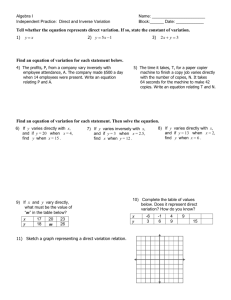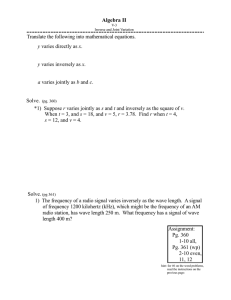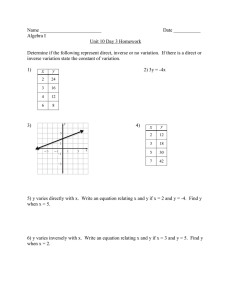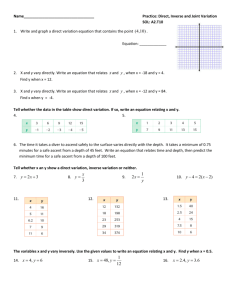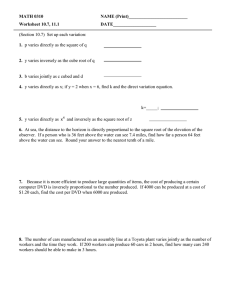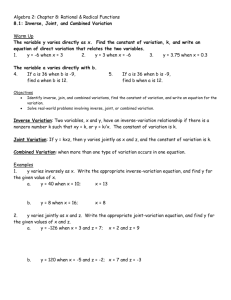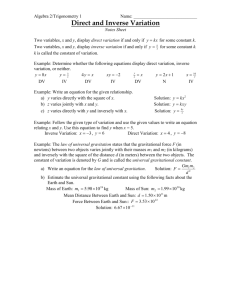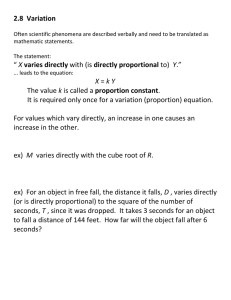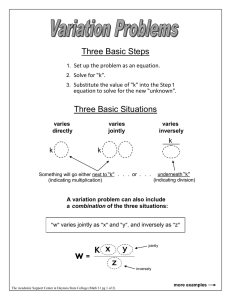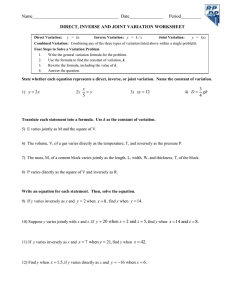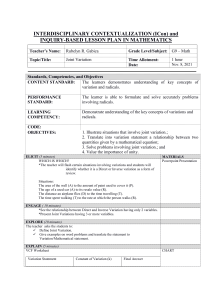9.1 Practice C
advertisement
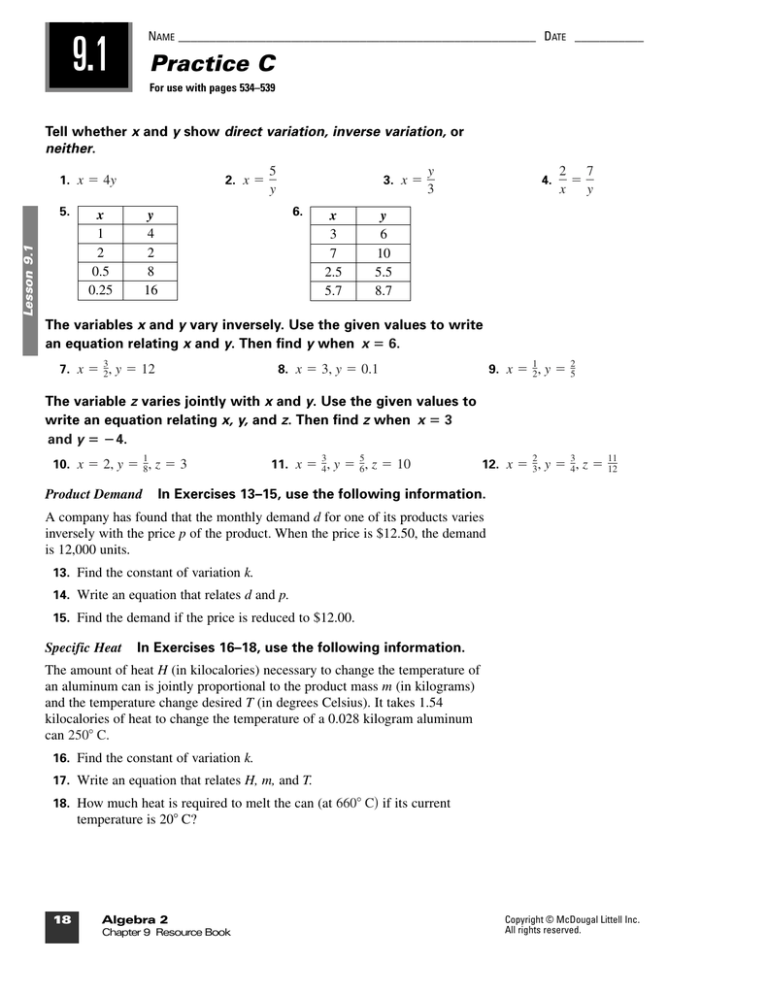
LESSON 9.1 NAME _________________________________________________________ DATE ___________ Practice C For use with pages 534–539 Tell whether x and y show direct variation, inverse variation, or neither. 1. x " 4y x 1 2 0.5 0.25 5 y 3. x " 6. y 4 2 8 16 x 3 7 2.5 5.7 y 3 4. 2 7 " x y y 6 10 5.5 8.7 Lesson 9.1 Lesson 9.1 5. 2. x " The variables x and y vary inversely. Use the given values to write an equation relating x and y. Then find y when x ! 6. 3 7. x " 2, y " 12 8. x " 3, y " 0.1 1 2 5 2 3 9. x " 2, y " The variable z varies jointly with x and y. Use the given values to write an equation relating x, y, and z. Then find z when x ! 3 and y ! "4. 1 10. x " 2, y " 8, z " 3 Product Demand 3 5 11. x " 4, y " 6, z " 10 12. x " 3, y " 4, z " 11 12 In Exercises 13–15, use the following information. A company has found that the monthly demand d for one of its products varies inversely with the price p of the product. When the price is $12.50, the demand is 12,000 units. 13. Find the constant of variation k. 14. Write an equation that relates d and p. 15. Find the demand if the price is reduced to $12.00. Specific Heat In Exercises 16–18, use the following information. The amount of heat H (in kilocalories) necessary to change the temperature of an aluminum can is jointly proportional to the product mass m (in kilograms) and the temperature change desired T (in degrees Celsius). It takes 1.54 kilocalories of heat to change the temperature of a 0.028 kilogram aluminum can 250! C. 16. Find the constant of variation k. 17. Write an equation that relates H, m, and T. 18. How much heat is required to melt the can (at 660! C! if its current temperature is 20! C? 18 Algebra 2 Chapter 9 Resource Book Copyright © McDougal Littell Inc. All rights reserved.
